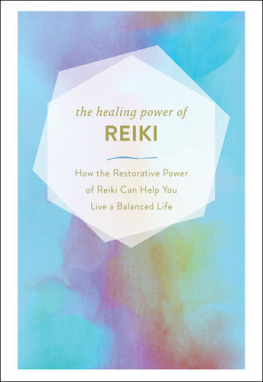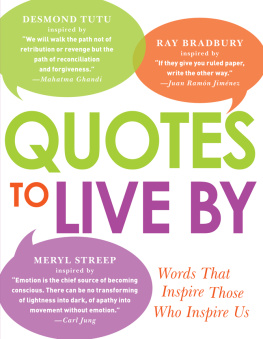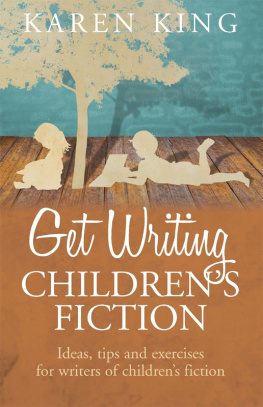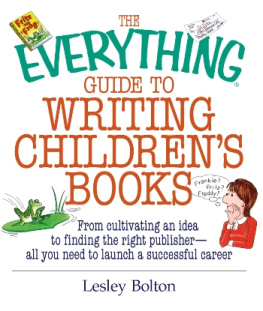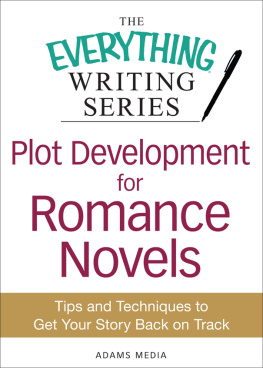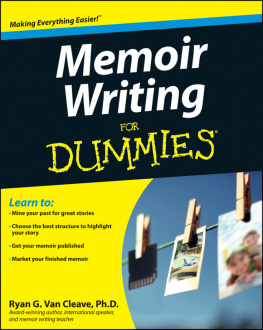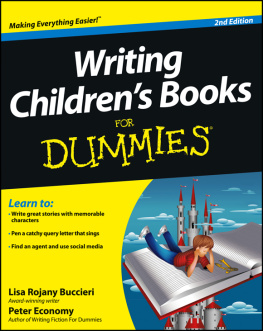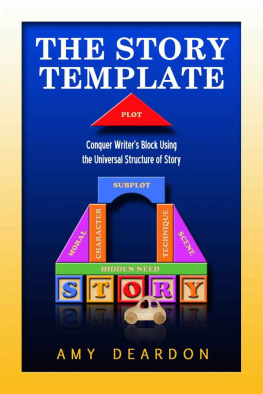The Everything Writing Series
Story Development for Childrens Books
Tips and Techniques to Get Your Story Back on Track
Adams Media, a division of F+W Media, Inc.
Avon, Massachusetts
Contents
Introduction
For more than 10 years, millions of readers have trusted the bestselling Everything series for expert advice and important information on writing topics ranging from plot and scenes to characters and dialogue. Packed with the most recent, up-to-date data, these Everything writing books help you get over your writers block, develop the story that you want, and create a book that you can publish.
The Everything Writing Series books are concise guides, focusing on only the essential information you need to write the book that youve always dreamed of. Whether youre looking for an overview of storyboarding, advice on starting a first draft, or suggestions for revising, theres an Everything writing book for you.
Story Development for Childrens Books concentrates on how you can create the perfect story for your childrens book. From using your personal experiences to organizing your ideas, Story Development for Childrens Books is a great quick reference to make sure your story becomes as heartwarming and innovative as it can be.
If youd like to learn more about writing childrens books, check out The Everything Guide to Writing Childrens Books, 2nd Edition, available in print (978-1-4405-0549-2) and eBook (978-1-4405-0550-8) formats.
Cultivating the Idea
Before you can begin to write, you must have a feeling for a story though you may not know much of the story yet. This is the starting point for all writers and must be handled with care. This section shows you how to organize what you have, how to capture new characters, images, and ideas, and how to develop your story in the process of writing.
The Notebook, Your Best Friend
Its happened to every writer at one time or another: You are hit unexpectedly by the best idea youve ever had, but when it comes time to make use of that idea, it is forever lost in the crevices of your mind. Invest in a small notebook to carry around with you at all times. You never know when a great idea for a story, a character, or even a characters name, will strike you; if you are prepared, you can jot it down and not have to worry about trying to remember it.
Jot down everything that catches your interest. Dont worry about trying to piece together an entire story from one observation. Just write it down and move on to the next thing that pops into your head or attracts your eye. If you harp on one idea, you might miss out on other, more useful observations and ideas for your childrens book.
Alert!
Its a good idea to attach a pen or pencil to your notebook by clipping it or tying it with a piece of string. If you have to constantly search for something to write with, you may lose the idea before you have time to write it down. Worse, you may tell yourself that you will remember your thought until you get home to your computer. You wont!
Theres no right and wrong way to write down your ideas. You can use abbreviations, pictures, full phrases, quotes, or fragments whatever helps you capture the thought and retain its relevance to your work. No one is going to be reading these notes but you, so feel free to use any kind of shorthand you want. The key is to make each note something you understand and can use.
Because you are ultimately going to organize these ideas, it is a good idea to separate them by story. For instance, you may come up with a strong title for your story but no other ideas. For now, write just the title on one page of your notebook and leave the rest of the page blank. If you later come up with character descriptions to go along with your title, flip back to that page and fill them in. If you capture feelings, descriptions, names, incidents, and bits of dialogue, add them to the page as well. Later on, when it comes time to actually write your story, consider how to connect these fragments. The richer your notes, the more cross-connections youll think of.
Use outside sources to expand and grow your idea notebooks. Clip stories from newspapers, and write down web links, maps, drawings, and questions about your characters. Treat your notebooks as mini-scrapbooks of reference material.
Essential
Use sturdy notebooks that will stand up to use. Dont use pads that allow pages to curl, rip, and disappear. Use notebooks with covers, date them, and shelve them near your workstation.
You may find that you fill up notebooks quickly. In that case, you should start thinking about actually writing. It is easy to put off writing by using the excuse that you are still gathering material. But if you have several notebooks full, chances are you have a great story in there waiting to be written. Not every writer, not even every best-selling writer, is bursting with story ideas all the time. The next few sections explore different ways to rouse ideas and help you start filling up those notebooks.
Personal Experiences
Write what you know. How many times have you heard that? It can mean two things, each of which will be an important component of your work: write about experiences you have had, and write about things you have researched.
Create a timeline of significant events from your childhood. If you arent sure where to start, use this to begin your journey. Recalling your own childhood is a great way to get your creative juices flowing. While significant events can certainly inspire plots, try to remember the insignificant things as well. One small detail has the power to shape an entire story.
Setting
Ideas for settings will be easy to come across if you consider your own childhood settings. Where did you grow up? Think about everything that surrounded you, from the items in your house to the geography of your location. Did you live in the country surrounded by forests and fields? Did you live in the city and play games in the streets with neighborhood kids? Were you landlocked or did you live on the water? Maybe you had a place you visited just to be by yourself your own secret garden. Think about why you chose that place, what elements it had that appealed to you.
What was the weather like? Maybe you grew up in tornado country. Maybe you lived on the coast and know what its like to prepare for a hurricane. Did you have traditional activities relating to the seasons? Maybe you didnt even have seasons.
Try to recall everything you can about the setting in which you grew up. Can you create an atmosphere for a story from the background you knew so well as a child? While the setting in which you live now would be quite fine to work with, you wont know it from a childs perspective unless of course you currently live where you grew up. Even more important than physical details of your childhood setting are the emotions you felt. When you write fiction the story may have little to do with your life, but the details and emotions you recall will make that story believable.
Emotions and Ideas
Try to recall specific emotions you had as a child and what actions triggered those emotions. For instance, perhaps you felt lonely when your big sister started school and you found yourself at home with no playmate. Maybe the death of a family member left you sad and confused. Can you remember the tingles of excitement as you tried to settle down for sleep on Christmas Eve?




